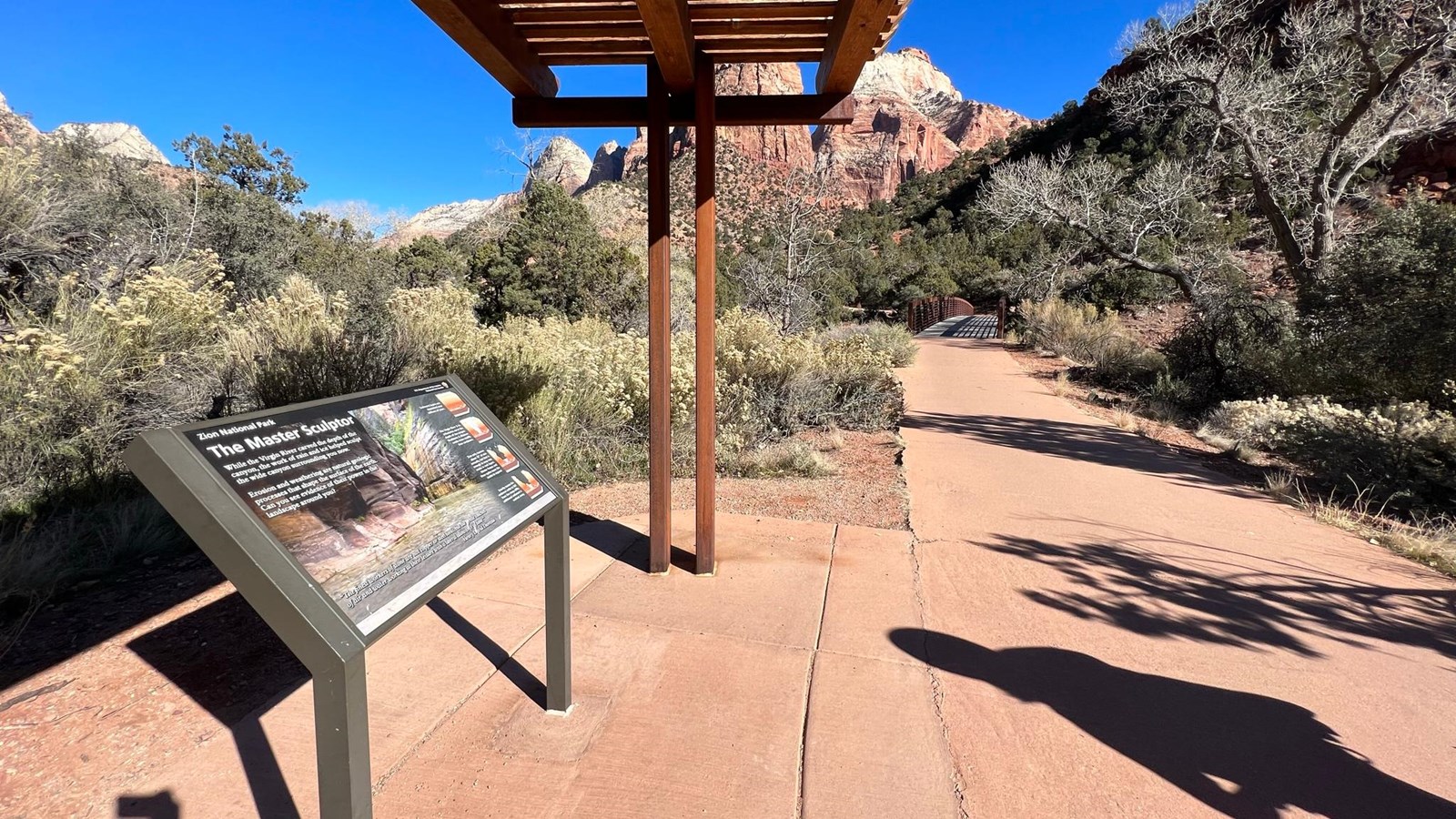Last updated: April 6, 2025
Place
Pa'rus - The Master Sculptor

NPS/Abi Farish
The Master Sculptor
Learn
The power of wind, water, and gravity have shaped Zion Canyon over time. Erosion and weathering also play a role forming natural arches in the park. A natural arch is formed when deep cracks penetrate into a layer of sandstone. Erosion wears away the exposed rock layers and surface cracks expand, isolating narrow sandstone walls, called "fins". Water, frost, and the release of tensions in the rock cause crumbling and flaking of the porous sandstone, eventually cutting through some of these fins. The resulting holes become enlarged to arch proportions by rockfalls and weathering.
Architecturally, arches are the most stable load bearing structure, but through weathering, eventually all arches collapse, leaving only buttresses that will inevitably give way to the unyielding forces of erosion.
Look
Among the arches in Zion, one of the most visible is the Crawford Arch. It can be seen from the Pa’rus Trail on Bridge Mountain, a thousand feet above the canyon floor. Bridge Mountain is located on the east side of the canyon and is one of the tallest peaks along the trail. Once you locate the peak, follow the left edge down to where it intersects with the other peak. From the intersection follow the small line of trees to the right. Can you spot the Crawford Arch?
Connect
Have you wondered why Utah and the Colorado Plateau have so many natural arches? Sandstone throughout the region meets the favorable conditions for large natural arches to form. The rock is strong enough to support the weight of the arch but soft enough to be easily eroded by wind, water, and gravity.
Transcript
Hello.
My name is Ranger Riley,
standing here in Zion Canyon.
Through the process of water and erosion, these canyon walls continue to form each year. Whether it be springs that feed
the Virgin River, or storms that bring in snow and rain, all sources of water are necessary for this beautiful scenery.
The largest source of water here is the Virgin River, Each mile that the river travels, it drops an estimated 70ft in elevation. As it does this, removes an estimated 1 million tons of sediment each year.
The river may create a deeper canyon, However, the width comes from storms.
Storms bring in water that penetrate the canyon walls around us. During winter conditions, this creates a process called freeze thaw.
Freeze thaw is where the water that was absorbed in these cliffs starts to freeze. The freezing water turns to ice, and the ice will start to force the rocks around them to crack under pressure. This is a slower process than the Virgin River eroding away, but it is necessary for the width of the canyon to grow.
Whether it be snow, rain, or the Virgin River, all sources of water are important for this beautiful scenery.
Thank you for joining me here in Zion National Park.
Please be safe and have a great day.
- Duration:
- 1 minute, 26 seconds
Join Ranger Riley to learn about how the Virgin River sculpts Zion Canyon.
